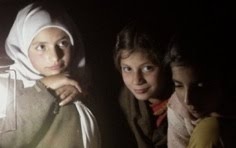I learn that this is the Sankofa, a mythic bird from their culture that flies forward while looking backward, with an egg held in its mouth.
The word Sankofa derives from the Akan peoples, a West African ethnic group that today resides in Ghana and the Ivory Coast. The Akan, over centuries, developed a highly artistic and communicative system of ideographic and pictographic symbols, each representing a specific concept, proverb or saying rooted in the Akan experience. These symbols can be found used extensively in indigenous textiles, metal and wood work, jewellery, and architecture too.
The older African religions had no sacred texts. Their beliefs were handed down mostly orally through proverbs and stories or through pictorial symbols that convey the deeper meanings of life and culture to a community or nation.
A proverb from which the concept and meaning of Sankofa is derived declares, "It is not wrong to go back for that which you have forgotten." It speaks of taking from the past what is good and bringing it into the present in order to make positive progress through the benevolent use of knowledge.
The Sankofa bird is stylized in a circular fashion to represent that there is no end and no beginning. It has an egg in its mouth, which represents not only the knowledge of the past upon which wisdom is based, but also signifies the generation to come that would benefit from that wisdom.
Culturally, the Sankofa bird represents the collective wisdom of a people, and teaches that a people must know its past legacy to understand their present situation in order to protect and create a future for generations to come. It is a message to take from the past what is good and bring it into the present in order to move forward with a strong foundation. It can also remind us that we are all here because of the sacrifices of those who have gone before.
Another translation of this concept is "You can't know where you're going unless you know where you come from," and this can hold for individuals as much as it can hold for cultures.
I see this in practice when as individuals we look at the things that happened in our past, take what we have learned from those experiences, and use it to move forward, and when this helps us also to avoid creating the same unhelpful patterns again and again.
Sankofa represents the concepts of claiming identity, redefinition, revisioning and acting – which are key aspects of personal growth work. It reminds one to focus on moving forward, while gaining wisdom from the past and achieving proper balance in preparation for the future.
Many of us bury in the past not only problems, but also often the best and most valuable parts of ourselves. Sankofa is a wonderful teaching here, reminding us that in such cases, "returning and fetching that which is lost" is not at all wrong, and often necessary. Whatever we have lost, forgotten, given up or been stripped of, can be reclaimed and revived. We are encouraged to reach back and gather the best of what our past has to teach us, reclaim the lost or marginalized aspects of our higher selves, so that we can achieve our full potential as we move forward.
May we, as 2011 begins, look back, look forward and wisely move on ...
Marguerite Theophil
"Any event retold from life that would appear to carry a meaning, however small, is a story"
~ Ben Okri

